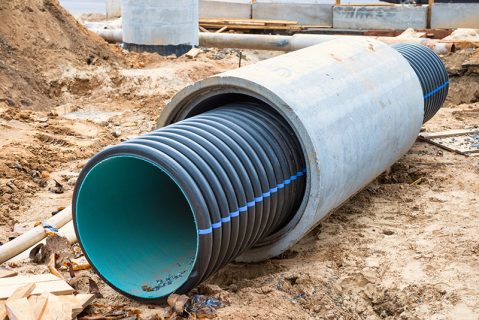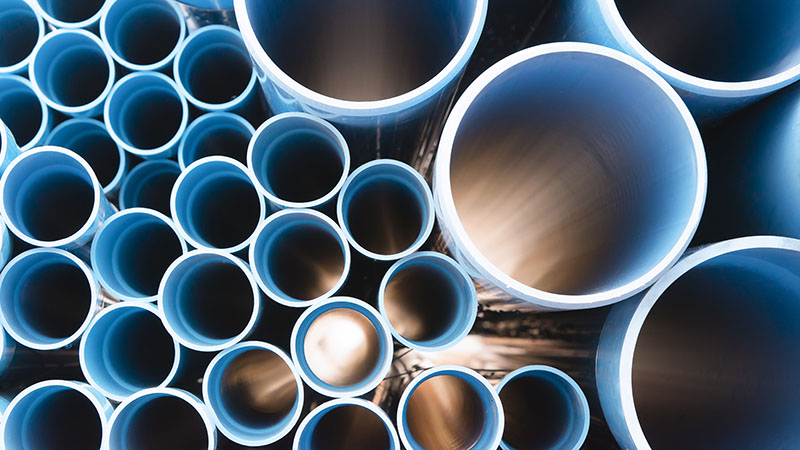Construction workers do their best on-site to avoid mishaps but sometimes they’re just unavoidable. What matters is how construction personnel respond to these situations.
Scouring the area for possible health and safety hazards is usually done before construction starts. Still, even with the latest technology in hand, it may be easy to miss any warning signs like aging sewer lines below the ground’s surface.
Numerous issues may cause pipes to leak or burst. Tree roots and corrosion are said to be some of the leading causes of deterioration over time. Further, a complete failure may be inevitable when above-ground construction work adds pressure to the already ailing sewer line.
How to Quickly Respond When a Sewer Line Fails Underground? The following are steps discussing how to act accordingly during such an event.
Step 1: Halt All Construction Work Immediately
At the first signs of a sewer line failure, all working crews should be notified to stop their activities immediately.
Wastewater could have profound health implications for all the workers on-site and they would need to stay away from the site until the sewer line has been repaired. Ensure that the workers are all informed of the dangers and understand the importance of waiting for assistance.

While crew members aren’t doing work, they could make the area safe by cordoning it off with caution tape or barriers so no one else would accidentally stumble into the hazardous area. The foreman or person in charge should immediately report the sewer line failure to their superiors and await their instruction.
Step 2: Call On Professionals To Assess The Situation
Plumbing specialists with years of experience would be the first line of contact in case of sewer line failures. Having experience as a qualified cured-in-place pipe or CIPP manufacturer could open more doors in terms of solutions, and they should be able to assist with an inspection of the sewer line.
Because wastewater could have profound health implications, the repairs would have to be done as soon as possible after the inspection.
Step 3: Discuss The Different Repair Options
Whether the repair entails relining the pipes, pipe bursting, or a complete replacement, the crew shouldn’t wait too long to give the go-ahead for the repairs.
Relining the pipes would be an eco-friendly and faster way of repairing a pipe-related concern. Pipe bursting breaks up the remaining broken pipeline before a new line is pulled through as a replacement. These are some examples of trenchless technologies that could do repairs too on a variety of pipes depending on their make.
Sometimes the most effective method of fixing the problem isn’t the quickest, like where excavations would have to be done to replace broken pipes.
Although some of the repairs could be reasonably simple and less time-consuming, other solutions may take longer to complete. Because of this, the contractors should start work as soon as they can.
Step 4: Inform Local Authorities And Residents
Before starting the repairs on sewer line fails, local authorities and residents should be aware of the situation. People in charge would need to know about the aging pipelines to anticipate more repairs. Further, nearby residents should be mindful that their plumbing may be affected during the repairs.
When everyone is informed, it may cause fewer hassles for the construction crew, plumbing experts, and other stakeholders. The sewer line can now be fixed without unnecessary interruptions or delays.
Step 5: Provide Briefing To The Personnel That’ll Be Involved In The Repairs
Keeping workers informed throughout the process could prepare them to lend a hand where needed, such as moving equipment. Crews would need to know when work could be resumed, and the plumbing experts would give a rough estimate of how long the repairs will take.
As a nod to existing workplace regulations, it’s a must to keep your team members in the know regarding the possible health effects of the sewer line repair and construction.
Step 6: Perform Repair Tasks And Do Quality Checks
Luckily, with technological advances, the repairs to the sewer lines can now be done quickly and efficiently. The first step of the repair would be to do a thorough inspection.
An inspection could include ground-penetrating radar to find the pipes and concrete scanning technology if the mainline is manufactured from concrete. Other inspection techniques may consist of cameras and robotic equipment navigating the pipeline.
The fluid pressure could be another aspect that they can check, making a log of the flow pattern recorded by the equipment.
After all the information has been gathered on the possible problem, the plumbing specialist will repair the line to provide the best possible outcome. After the repair is done, the area should be inspected again. There may have been missed elements during the restoration that could be addressed after the inspection.
In Conclusion
How to Quickly Respond When a Sewer Line Fails Underground?
As soon as construction workers realize that there may be a problem with the sewer lines, they shouldn’t hesitate to call a professional as soon as possible. Plumbing experts are trained to find faults and quickly repair them efficiently.
It’s said that the longer construction workers wait to report the issue, the greater the damage could become. More considerable damage to the pipeline could result in more significant repair bills too. Getting the right help fast would most certainly deliver outstanding quality and long-lasting solutions.


